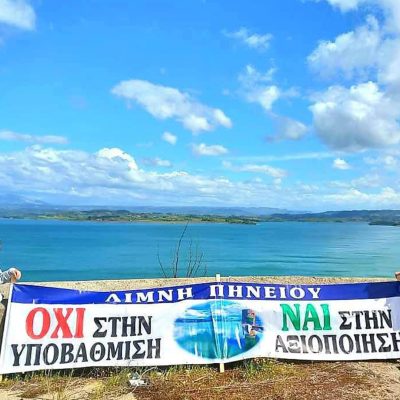A landscape of rare beauty—its flora, fauna, fertile fields, and immense history—is now under threat. Giant photovoltaic projects are planned for its lakeshores.
Our guest is Christos Liakopoulos: municipal employee, active citizen, nature lover, hiker, and resident of Amaliada, with roots in Peneia.
The Dam has long been abandoned. The area receives little attention, while looting and vandalism have left their mark.
In the 1990s, there was an effort to promote mild tourism with rowing competitions. It, too, was left behind.
Work on the Dam began in 1961; it was completed in 1968. Since then, not a single maintenance project has been carried out.
Lake Peneus is artificial, covering 19.895 sq. km. To create it, one village—Xenies—and three settlements—Palaiochora, Agia Anna, and Souli—were submerged.
In recent years, drought has caused the waters to recede, revealing the old villages once again. The lake itself has shrunk by 30–40%.
Here, too, myth lives on: the fifth labor of Hercules, the cleansing of the Augean stables, unfolded in this very land.
The Peneus River springs from Mount Erymanthos, on the border with Achaia, and flows into the Ionian Sea near Gastouni. Its course stretches 80.9 km, with estuaries protected under Natura 2000.
On 14 September, at 10:30 a.m., residents are calling for a gathering at the Peneia Mosque to decide the future of their land.
Their demands are clear:
a) Infrastructure to safeguard the Dam’s viability
b) Proper water management and energy from the river’s natural flow
c) Recognition of the region’s archaeological wealth—the birthplace of the Olympic Games—and its development as a cultural and tourist destination.
